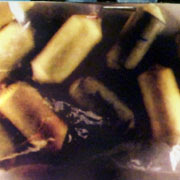45 Spanish Drug Mules arrested at Peru’s "Jorge Chávez" international airport in Lima

Anti-drug police at Peru’s "Jorge Chávez" international airport in Lima have had their hands full over the last year, arresting nearly two "mules" a day, each carrying an average of five kg of pure cocaine.In 2005, 249 "mules" or drug couriers were arrested. In 2006 there were 454 arrests, and last year the number rose to 721, carrying a total of nearly four tons of cocaine, the police National Anti-Drug Directorate told IPS. The usual method is to swallow some 10 packets or capsules, each containing 100 grams of cocaine. But often larger quantities are carried, with the drug hidden under false bottoms in luggage, camouflaged in different kinds of containers, or attached to the body with adhesive tape. Of the 721 smugglers arrested in 2007, 62.4 percent (453) were Peruvian and the rest were foreigners, particularly from Spain (45), the Netherlands (29) and Brazil (18). Over three-quarters of the Peruvian "mules" were poor or unemployed. According to the histories of detainees taken by the anti-drug police at the airport, the going rate paid by drug traffickers to couriers who swallow cocaine packets and are sent to Brazil or Argentina is about 1,000 dollars. If they are sent to the United States, Europe or Asia, where the drugs have higher value, payment can be between 2,000 and 3,000 dollars. The more the couriers travel, the more they are paid, unless they are caught by the police, or die from cocaine poisoning when a capsule splits open in their bowels. For a poor or unemployed Peruvian, the payment for swallowing the capsules and travelling four or five hours to Buenos Aires or Sao Paulo is extremely attractive, in spite of the risks. The number of people willing to take the risk is increasing. In 2007, 452 were arrested, compared to 193 in 2006. Poverty creates a fertile recruiting ground. 
The Peruvian press, accustomed to printing news about "mule" detentions, was nevertheless shocked on Dec. 22 by the arrest of 43-year-old Evelyn Changra, who attempted to travel to Buenos Aires with one kg of cocaine in her stomach, together with her children, aged 17 and 15, who had also swallowed drugs. "This was a very poor family from San Juan de Lurigancho," an anti-drug police officer told IPS, referring to one of the most densely populated shantytown districts of Lima. "The drug trafficker who recruited Evelyn Changra promised her 3,000 dollars if she would take her children along. She accepted because she had never been offered so much money in her life," the source said. A large proportion of Peruvian "mules" also come from Villa El Salvador, Comas and Carabayllo, similar working-class districts on the outskirts of Lima.
Of the 721 couriers intercepted at the airport, 303 (42 percent) were heading for Brazil, 148 (20.5 percent) for Argentina and 122 (16.9 percent) for Spain. Recently introduced cut-price commercial flights from Lima to Sao Paulo have encouraged the drug mafias to increase trafficking to Brazil’s biggest city. In Argentina, drug traffickers are active among the large Peruvian community in Buenos Aires, and through relatives, they recruit "mules" from poor districts like San Juan de Lurigancho. In fact, the most important drug lords operating in the Argentine capital come from that part of Lima. "Those we catch tend to be people who stand out because they are obviously nervous, behave suspiciously, or don’t look as if they could afford a plane ticket. But many do manage to leave the country," the police source said. "It’s impossible to take X-rays of everybody, and it’s also impossible to search all the baggage and every object that could potentially be hiding cocaine." As trafficking by "mule" increases, President Alan García announced that he would hold talks with the governments of several countries so that their citizens would serve sentences in their home countries, to ease the overcrowding in Peruvian prisons. The National Prisons Institute told IPS that only 18 percent of the drug couriers arrested have so far been sentenced. In the Santa Monica women’s prison in Lima, there are 1,275 inmates accused of drug-related crimes: 942 Peruvians and 207 foreigners. Less than 240 have already been convicted and sentenced.










0 comments:
Post a Comment